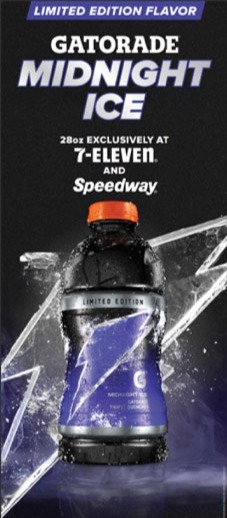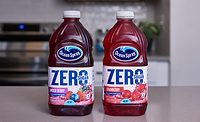2024 State of the Beverage Industry: Sports drinks embrace everyday wellness
Sports drink mixes sales outpace category performance

Image courtesy of Electrolit
Consumers’ interest in wellness has impacted many beverage categories and the sports and protein drink markets are no different. What is different is these performance beverages were once synonymous with athletes, but instead have embraced the concept of supporting everyday wellness.
“[T]here is a shift toward marketing sports drinks and protein drinks for everyday wellness,” said Cara Rasch, food and beverage research analyst at Packaged Facts, a division of MarketResearch.com, Rockville, Md., in Beverage Industry’s May 2024 issue. “Sports drinks are now marketed as everyday ‘hydration multipliers’ for general well-being, not just for athletes. Unilever’s purchase of Liquid I.V. proves this ― the brand went from a sports drink to a daily wellness drink, driving category growth. Protein drinks are also targeting everyday use occasions for consumers to feel full for longer and have more energy throughout the day.”
Rasch explained that people are more likely to prioritize general wellness versus hardcore fitness, allowing sports and protein drink formulations to target “feel good” and “energized” throughout the day attributes to reach a broader audience.
“Casual users are a much larger present and potential market for these products than athletes and fitness enthusiasts,” she said.
Chicago-based Mintel also pinpoints the potential for sports and protein drinks beyond the traditional athlete consumer group. In its 2023 report titled “Sports and Performance Drinks – US” it notes how expanded functionality could allow brands to reach all consumer corners.
“Clustered consumer interest among non-athletes in additional functionality beyond sports performance proves the value in blurring beverage lines to expand relevance,” the report states. “The audience is there ― and willing to pay premium for these offerings.”
The performance beverage markets’ dedication to broader consumer needs has lifted its own performance.
Top non-aseptic sports drinks (Individual brands)
Source: Circana, Chicago. Total U.S. supermarkets, drug stores, gas and convenience stores, mass merchandisers, military commissaries, and select club and dollar retail chains for the 52 weeks ending May 19.
“Sports drinks and the category of protein drinks, nutritional shakes, and meal replacement beverages performed well in the last year,” Packaged Facts’ Rasch said in Beverage Industry’s May 2024 issue. “Packaged Facts has found that retail sales of sports drinks grew 9% in 2023, while sales in the category of protein drinks, nutritional shakes, and meal replacement beverages increased 6% during that time, compared to growth of 8.1% in the overall functional beverage market.”

Rasch predicted the category will continue to see growth, albeit at a decelerated pace.
“I expect these markets will continue to see growth in 2024,” she said. “Inflationary pressures greatly increased prices in the last few years at a time when volumes were also increasing, leading to an elevated base of sales. In 2024, sales are expected to grow off this elevated base at a slightly decelerated rate compared to 2023 as price inflation calms and volumes continue to increase.”
In Mintel’s report, the market research firm notes that despite budget restraints, the sports and performance drinks market still is a priority of consumers as 32% of surveyed consumers reported more frequent consumption compared with the previous year. Though inflation still will leave its impact on the category.
“Inflation will push sales up until intensity lessens and category sales resume more modest but consistent growth, especially as marketing parameters continue to widen to more consumers through layered functionality and inclusive marketing,” Mintel’s report states.
According to data from Chicago-based Circana the unit price for the overall sports drink category increased 10.8% for the 52 weeks ending May 19. During that same timeframe, sales for the overall sports drink category was $11.9 billion, a 5.4% increase. However, case sales were down 4.9% during that same period.
Accounting for the majority of the category, the non-aseptic sports drink segment recorded $11 billion in sales, a 3% increase. Meanwhile, case sales were down 5.6%.
The Top 3 was comprised of Gatorade, BodyArmor and Powerade. However, the segment is seeing growth more from emerging brands such as Prime, with sales up 95.4%, and Electrolit, with sales up 25%.
This summer, Electrolit unveiled its latest limited edition flavor, Green Apple, available at H-E-B, 7-Eleven and other Texas retailers exclusively through the end of summer. Green Apple joins Electrolit’s growing flavor portfolio that features core and limited edition variants, in addition to five Zero Sugar options and ready-to-mix electrolyte hydration sachets. Each serving in the 21-ounce bottle contains 326 mg of electrolytes.
Top sports drink mixes (Individual brands
Source: Circana, Chicago. Total U.S. supermarkets, drug stores, gas and convenience stores, mass merchandisers, military commissaries, and select club and dollar retail chains for the 52 weeks ending May 19.
Although a much smaller segment, the sport drink mix market outperformed the overall category in terms of growth. For the 52 weeks ending May 19, sales totaled $875.9 million, a 49.7% increase. Unit sales also experienced double-digit growth, up 22.8%.
More than 50% of the market share of the segment is attributed to Liquid I.V., which registered sales of $438.9 million, a 55.6% increase. Earlier this year, Liquid I.V. announced its first brand refresh, revealing a modern visual identity and color palette with customer-inspired, benefits-driven packaging and merchandising.
Launching alongside a new brand campaign called Tear. Pour. Live. More., the brand refresh aims to surprise and delight loyal Liquid I.V. customers and captivate a new generation ― all while reflecting Liquid I.V.’s commitment to continuous innovation and to elevating the vitality of people and the planet, the company says. This new chapter marks the company’s first-ever brand refresh since its inception in 2012.
This all comes as the functionality and attributes of many beverage categories have taken on multiple roles. Case in point, the embracement of hybrid beverages.
“Functional beverages are increasingly blurring the lines between categories,” Packaged Facts’ Rasch said in Beverage Industry’s May 2024 issue. “Products with multiple claims are on the rise. For example, sports drinks with caffeine offer both energy and hydration. We’re also seeing beverages with gut health benefits, immunity boosters, or weight management claims, all alongside traditional functions like sports recovery or hydration.”
Beyond functionality, Rasch added that additional health-and-wellness trends are likely to impact future formulations within sports and protein drinks.
“A number of trends are influencing and will continue to influence the market for sports drinks and protein drinks, including ‘better-for-you’ trends such as clean label, unrefined sugars, sugar-free and no sugar added claims, low-carb and high protein trends, and natural and organic ingredients, which will become increasingly available, and at lower price points, in the future,” she explained.
The younger generations such as Gen Z and Gen Alpha also are starting to shape the market more, yet everyday use occasions is the future the category, she added.
“Protein is considered healthy by many consumers, who may look to protein drinks to increase their protein intake and stay full throughout the day without necessarily looking for functions such as sports recovery, bulking up, weight loss or meal replacements,” Rasch said in Beverage Industry’s May 2024 issue. “Sports drinks will also continue to be sought out by consumers who are placing more attention on everyday hydration, bringing these beverages to more homes and workplaces rather than gyms and sports fields.”
Looking for a reprint of this article?
From high-res PDFs to custom plaques, order your copy today!






